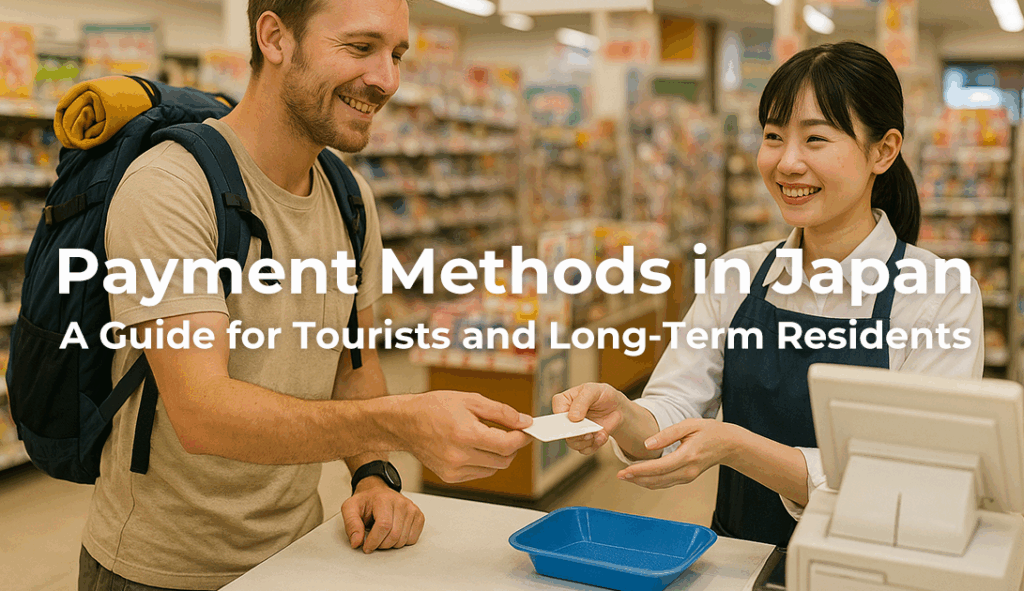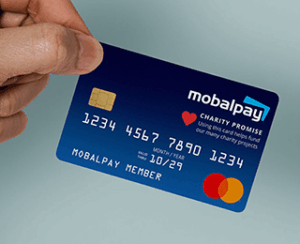- Introduction: How People Pay in Japan Today
- Cash: Still Widely Used
- Credit & Debit Cards
- IC Cards: Suica, PASMO & More
- QR Code & Mobile Payments
- Best Payment Methods for Tourists
- Best Payment Methods for Long-Term Residents
- Other Payment Options
- Recommended Payment Setups by Situation
- Conclusion: Choose What Fits Your Stay
1. Introduction: How People Pay in Japan Today
Japan is famous for its mix of tradition and technology, but its payment system can be unexpectedly cash-focused. While cashless options are growing, cash is still widely used in everyday life. Whether you’re visiting for a short trip or planning to stay long-term, understanding Japan’s payment options will help you avoid confusion and make your experience smoother.
2. Cash: Still Widely Used
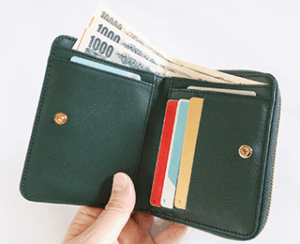
Cash remains the most accepted payment method in Japan. Many small restaurants, local shops, and rural areas still operate on a cash-only basis. ATMs are easy to find at convenience stores, banks, and post offices.
ATMs at 7-Eleven and Japan Post Bank are especially foreigner-friendly, with English menus and international card support.
3. Credit & Debit Cards
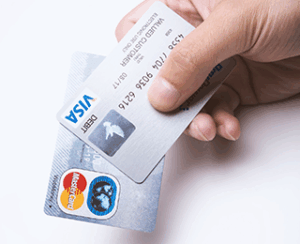
Credit and debit cards are gaining acceptance in urban areas and larger stores. The most accepted brands are Visa, Mastercard, JCB, and American Express. However, some small businesses still do not accept cards.
4. IC Cards: Suica, PASMO & More
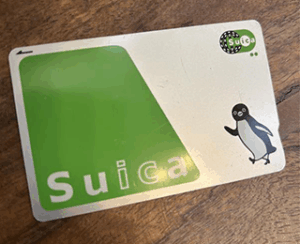
IC cards are rechargeable cards primarily used for public transport, but also accepted at convenience stores, vending machines, and some shops.
Popular IC cards include:
- Suica (JR East)
- PASMO (Tokyo Metro)
- ICOCA (Kansai region)
Tourists can buy a physical IC card at airports or train stations and top them up with cash.
Mobile Suica for iPhone Users
If you have an iPhone 8 or newer, you can easily add Suica to your Apple Wallet, even with a foreign-issued card. This is the most convenient way for tourists to go cashless for transit and small purchases.
Why Android Users May Have Trouble
- The Mobile Suica app is only available in the Japanese Google Play Store.
- Most Android phones sold outside Japan lack the required FeliCa (Osaifu-Keitai) hardware.
5. QR Code & Mobile Payments
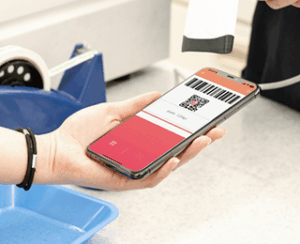
Japan has seen rapid growth in QR code payments, especially among younger users. Popular mobile payment apps include:
- PayPay
- Rakuten Pay
- LINE Pay
- d-Barai
- au PAY
- A Japanese phone number
- A Japanese bank account
- Identity verification (in Japanese)
6. Best Payment Methods for Tourists
For short-term visitors, we recommend a combination of:
- Cash for small shops and rural areas
- IC card (Suica/PASMO) for transport and daily purchases
- Apple Wallet Suica for iPhone users (not Android)
- International credit/debit card for hotels and shopping centers
7. Best Payment Methods for Long-Term Residents
If you’re staying in Japan for more than a few months, you’ll need more flexible solutions.
QR Code Payments
Once you have a Japanese bank account and phone number, QR apps like PayPay and Rakuten Pay become very convenient. They’re accepted at many stores, restaurants, and even some street vendors.
Japanese Credit & Debit Cards
Many online services in Japan—such as subscription platforms, ticket booking systems, and shopping sites—may reject foreign-issued cards, even if they are from well-known international brands. This can make daily life and online purchases frustrating for newcomers.
Japanese credit cards are useful but hard to obtain without a long credit history and stable job. Debit cards are easier, but opening a bank account in Japan can still be time-consuming.
Prepaid Cards: A Smart Alternative
If you don’t have a Japanese credit card or bank account yet, Japanese prepaid cards are an excellent option. They work like debit cards and can be used at most merchants that accept major card networks, including many shops and online services.
Introducing MobalPay
MobalPay is a prepaid Mastercard built specifically for foreigners in Japan. It’s easy to apply for with just your Residence Card. No Japanese credit history or bank account is needed.
- With cash at convenience stores
- Via bank transfer
MobalPay is perfect for online shopping, managing your budget, or paying for everyday items while you settle into life in Japan.
8. Other Payment Options
Convenience Store Bill Payments
You can pay utility bills, online shopping orders, and more at 7-Eleven, Lawson, and FamilyMart using printed barcodes. It’s a handy alternative if you don’t have a credit card.
Bank Transfers (Furikomi)
Used for rent, tuition, and business payments. Requires a Japanese bank account. Most interfaces are in Japanese.
9. Recommended Payment Setups by Situation
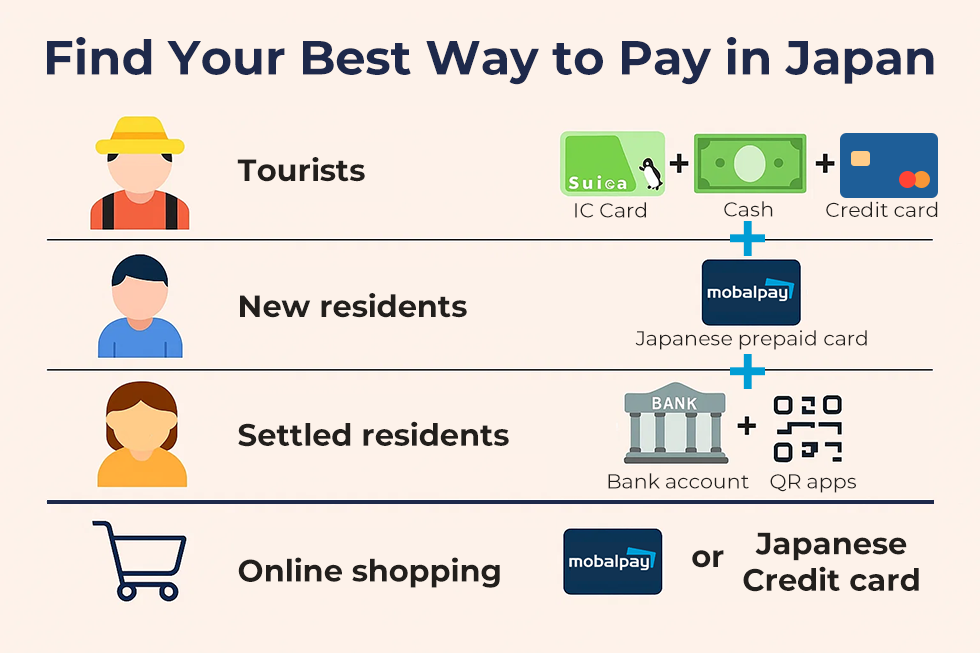
| Situation | Best Methods |
|---|---|
| Tourists | Cash + IC card (Suica) or iPhone Wallet + Foreign-issued cards |
| New residents | Cash + IC card + Japanese prepaid card (MobalPay) |
| Settled residents | Cash + IC card + MobalPay + Bank account + QR apps |
| Online shopping | MobalPay or Japanese credit card |
10. Conclusion: Choose What Fits Your Stay
Japan offers a mix of traditional and modern payment methods. For tourists, a physical Suica and some cash will cover most needs. For long-term residents, prepaid solutions like MobalPay provide a smooth start before you’re fully set up with a bank account and QR apps.
Choosing the right tools for your situation will make life in Japan easier and more enjoyable.
